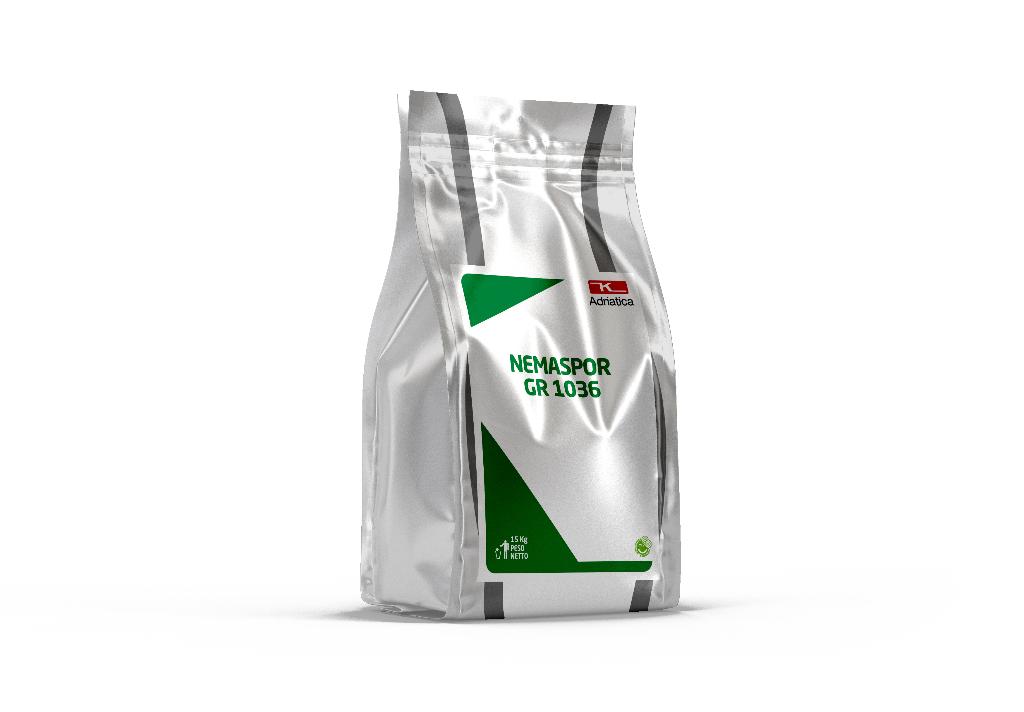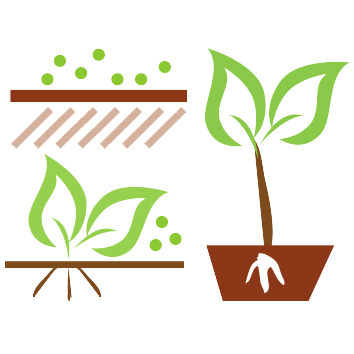

Packaging 15 kg - Pallet 900 kg
MANAGEMENT OF THE RHIZOSPHERE
NEMASPOR GR 1036
ENRICHES THE MICROBIAL POPULATION OF THE RHIZOSPHERE
PROMOTES THE SOLUBILIZATION OF THE ELEMENTS
PROVIDES NUTRIENTS TO THE SOIL
PROMOTES RHIZOGENESIS AND ROOT ABSORPTION
ALLOWED IN ORGANIC FARMING
NEMASPOR GR 1036 is a bioactivated microgranular fertilizer containing a consortium of microorganisms composed of:
-endomycorrhizal fungi of the genus Glomus, capable of establishing a symbiotic relationship with the plant in the rhizosphere;
-antagonistic fungi of the genus Trichoderma, capable of producing antibiotics and acting as disturbing agents against the growth of other pathogens;
- rhizosphere bacteria of the genus Bacillus, which stimulate the growth of the root system, as well as inhibiting the development of some phytopathogens.
Thanks to the synergistic action of the various microorganisms and their presence in large quantities, NEMASPOR GR 1036 acts as a "bioactivator" of the rhizosphere, increasing its microbial activity and improving the availability of nutrients. This promotes root development and improves plant's nutrient and water uptake efficiency, with a consequent increase in vegetative lushness and a general stimulation of growth. The beneficial effects of NEMASPOR GR 1036 application and rhizosphere "bioactivation" also affect the endogenous resistance levels of the plants, which are more tolerant to abiotic stress or to unfavorable climatic and/or soil conditions.
The application of NEMASPOR GR 1036 allows to maintain and regenerate soil microbiological biodiversity balances.
| Culture | Time of application | Dose/hectare* |
|---|---|---|
| Pome fruits (Apple, Pear, Quince), Stone fruits (Nectarine, Peach, Plum, Apricot, Cherry), Olive, Grapes, Citrus (Tangerine, Lemon, Orange, Bergamot, Clementine) e Kiwifruit | At transplanting or at vegetative restart |
50 kg
|
| Small fruits (Currant, Blackberry, Blueberry, Raspberry) e Strawberries | At transplanting or at vegetative restart |
50 kg
|
| Fruiting vegetables (Pumpkin, Zucchini, Tomato, Pepper, Melon, Eggplant, Cucumber, Watermelon) | Localized at transplanting |
50 kg
|
| Industrial crops (Tobacco, Soybeans, Industrial tomato, Sunflower, Cotton, Rapeseed, Sugarcane, Beets) | Localized at transplanting |
50 kg
|
| Flowers and ornamentals | Localized at transplanting |
50 kg
|
-
Pome fruits (Apple, Pear, Quince), Stone fruits (Nectarine, Peach, Plum, Apricot, Cherry), Olive, Grapes, Citrus (Tangerine, Lemon, Orange, Bergamot, Clementine) e Kiwifruit50 kgAt transplanting or at vegetative restart
-
Small fruits (Currant, Blackberry, Blueberry, Raspberry) e Strawberries50 kgAt transplanting or at vegetative restart
-
Fruiting vegetables (Pumpkin, Zucchini, Tomato, Pepper, Melon, Eggplant, Cucumber, Watermelon)50 kgLocalized at transplanting
-
Industrial crops (Tobacco, Soybeans, Industrial tomato, Sunflower, Cotton, Rapeseed, Sugarcane, Beets)50 kgLocalized at transplanting
-
Flowers and ornamentals50 kgLocalized at transplanting
-
 Cover fertilization
Cover fertilization
-
 Localized fertilization at sowing/transplanting
Localized fertilization at sowing/transplanting
-
 Fertilizers for compost integration
Fertilizers for compost integration






